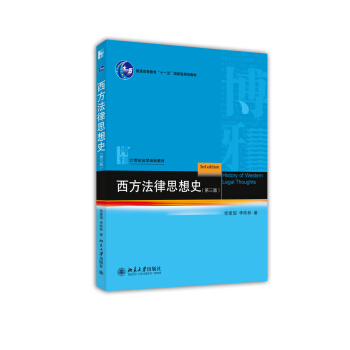![高級高級英語選修課教材·曆史與文化係列·21世紀實用禮儀係列教材:西方文明史(第5版) [A Brief History of Western Civilization: The Unfinished Legacy, Combined Volume (5th Edition)]](https://pic.qciss.net/10075061/ccd072cc-b090-4988-accb-04e2b426bcfd.jpg)
高級高級英語選修課教材·曆史與文化係列·21世紀實用禮儀係列教材:西方文明史(第5版) [A Brief History of Western Civilization: The Unfinished Legacy, Combined Volume (5th Edition)] pdf epub mobi txt 電子書 下載 2025
- 西方文明史
- 曆史
- 文化
- 英語教材
- 禮儀
- 選修課
- 高等教育
- 西方文化
- 曆史文化
- 教材

具體描述
編輯推薦
《西方文明史(第5版)》囊括瞭曆史地理、政治製度、經濟樣式、地區衝突與戰爭、宗教、思想觀念、文化藝術、社會生活等諸多的內容,讓讀者對西方文明史的整體輪廓與豐厚積澱有瞭一個比較清晰的認識。This bust of Socrates portrays himwith the traditional beard of thephilosopher.His features display thetraditiOn that thiS man.whosethoughts were the most beautiful.was nevertheless of rema rkablyhomely appearance.The battle of Agincourt(1415)wasone of the great battles of the HundredYears’War.
The heavily armoredFrench cavalry mel defeat at lhehands of a much smaller force ofdisciplined English pikemen andIongbowmen.
This image of Henry VIII is amongthe most recognizable from an age of mona rchy that began in the sixteenth century and coincided withthe consoI;dations of nations in western Europe and their expansioninto aII CO rners of the g10be Everywhere small principalities and kingdoms were absorbed by theirlarger and more powerful neighbors,and EuropeS military might was ondisplay as far easl as India and asfar west as Peru.
Though Englandplayed but a smalI part in a centurydominated by Spain and France,even its monarch could believe thathe bestrode lhe world fike a colossus.This cartoon depicts the plightof the French peasants.An oldfa rme r iS bowed down Unde rthe weight of the p riviIegeda ristoc racy and cle rgy whilebirds and rabbits,protected byunfair game laws,eat his crops.
內容簡介
《西方文明史》既緊緊把握瞭政治發展的綫索,同時又兼顧瞭經濟、文化等諸多領域,並運用“新史學”的方法,將底層大眾的日常社會生活也囊括其中,力求多層次、多角度地揭示西方文明起源、發展、演進、更新的漫長曆程和整體圖景。在敘述和闡釋西方文明曆史的過程中,作者將大多數精力“一直聚焦在拓展齣一種對西方文明的可靠的和易讀的敘述上”,而並非要將之寫成“一部百科全書”。因此,凡是與這一學術主旨不相關的龐雜內容一概不予敘述,而那些被長期忽略瞭的“普通男女的曆史”則被納入到敘事之中。此外,作者還從文明的“親緣”關係齣發,將斯拉夫文明作為西方文明的組成部分而不是邊緣地帶來加以敘述。正是基於這樣的新理念,該書囊括瞭曆史地理、政治製度、經濟樣式、地區衝突與戰爭、宗教、思想觀念、文化藝術、社會生活等諸多的內容,讓讀者對西方文明史的整體輪廓與豐厚積澱有瞭一個比較清晰的認識。內頁插圖
目錄
Detailed ContentsPreface
Supplements
About the Authors
INTRODUCTION: The Idea of Western Civilization
Chapter 1 The First Civilizations
Chapter 2 Early Greece,2500-500 B.C.E.
Chapter 3 Classical and Hellenistic Greece,500-100 B.C.E.
Chapter 4 Eady Rome and the Roman Republic,800-146 B.C.E.
Chapter 5 Imperial Rome,146 B.C.E.-192 C.E.
Chapter 6 The Transformation of the Classical World,192-500
Chapter 7 The Classical Legacy in the East: Byzantium and Islam
Chapter 8 The West in the Early Middle Ages,500-900
Chapter 9 The High Middle Ages,900-1300
Chapter 10 The Later Middle Ages,1300-1500
Chapter 11 The Italian Renaissance
Chapter 12 The European Empires
Chapter 13 The Reform of Religion
Chapter 14 Europeat War,I555-I648
Chapter 15 The Experiences of Life in Early Modern Europe,1500-1650
Chapter 16 The Royal State in the Seventeenth Century
Chapter 17 Science and Commerce in Early Modern Europe
Chapter 18 The Balance of Power in Eighteenth-Century Europe
Chapter 19 Culture and Society in Eighteenth-Century Europe
Chapter 20 The French Revolution and the Napoleonic Era,1789-1815
Chapter 21 Industrial Europe
Chapter 22 Political Upheavals and Social Transformations,1815-1850
Chapter 23 State Building and Social Change in Europe,1850-1871
Chapter 24 The Crisis ofEuropean Culture,1871-1914
Chapter 25 Europe and the World,1870-1914
Chapter 26 War and Revolution,1914-1920
Chapter 27 The European Search for Stability,1920-1939
Chapter 28 Global Conflagration: Wodd War Ⅱ,/939-1945
Chapter 29 The Cold War and Postwar Economic Recovery,1945-1970
Chapter 30 The End of the Cold War and New Global Challenges,1970 to the Present
詞匯與注釋
精彩書摘
The West is an idea.It is not visible from space.An astro-naut viewing the blue——and·-white terrestrial sphere can make out the forms of Africa,bounded by the Atlantic,the Indian Ocean,the Red Sea,and the Mediterranean.Australia,the Americas,and even Antarctica are distinct patches of blue-green in the darker waters that surround them.But nothing comparable separates Asia from Europe,East from West.Viewed from 100 miles up,the West itself is invisible.Although astronauts can see the great Eurasian landmass curving around the Northern Hemisphere,the Ural Mountainsmthe theoretical boundary between East and West——appear faint from space.Certainly they are less impressive than the towering Himalayas,the Alps,or even the Caucasus.People,not geology,determined that the Urals should be the arbitrary boundary between Europe and Asia. Even this determination took centuries.Originally,Europe was a name that referred only to central Greece.Gradually,Greeks extended it to include the whole Greek mainland and then the landmass to the north.Later,Roman explorers and soldiers carried Europe north and west to its modern bound-aries.Asia too grew with time.Initially,Asia was only that small portion of what is today Turkey inland from the Aegean Sea.Gradually,as Greek explorers came to know of lands far-ther east,north,and south,they expanded their understand。ing of Asia to include everything east of the Don River to the north and ofthe Red Sea to the south. Western civilization is as much an idea as the West itsel Under the right conditions,astronauts can see the Great Wall of China snaking its way from the edge of the Himalayas to the Yellow Sea.No comparable physical legacy ofthe West is so mas-sire that its details can be discerned from space.Nor are Western achievements rooted forever in one corner of the world.Ⅵ1at we call Western civilization belongs to no particular place.Its lo.cation has changed since the origins of civilization,that is,the cultural and social traditions characteristic of the civitas,or city.Western”cities appeared first outside the”West),in the Tigris and Euphrates river basins in present-day Iraq and Iran,a region山at we today call the Middle East.These areas have never losttheir urban traditions,but in time,other cities in North Africa,Greece,and Italy adapted and expanded this heritage. Until the sixteenth century c…E the western end of the Eurasian landmass was the crucible in which disparate cul.tural and intellectual traditions of the Near East.the Mediterranean,and northern and western Europe were smelted into a new and powerful alloy.Then“the West”ex-panded by establishing colonies overseas and by giving rise tothe“settler societies”of the Americas,Australia and NewZealand,and South Africa.Western technology for harnessing nature,Westerh formsof economic and political organization,Western styles of artand music are for good or ill-一dominant influences inworld civilization.Japan is a leading power in the Western tra.ditions of capitalist commerce and technology.China,themost populous country in the world,adheres to Marxist so.cialist principles——a European political tradition.Millions ofpeople in Africa,Asia,and the Americas follow the religions ofIslam and Christianity,both of which developed fromJudaism in the cradle ofWestern civilization.前言/序言
正如德國人的人文著述中充滿日爾曼民族的自豪感和優越感那樣,西方曆史學傢在撰寫他們自己的文明史時,往往會過度褒揚西方人的民族性、製度和文化。在他們的筆下,西方文明通常被看做人類文明發展的主綫和軸心,東方文明則自然成為“化外”或“非主流”。M.A.凱什嵐斯基(M。A.Kishlallsky)等人的《西方文明史》似乎突破瞭這一思想束縛和文化囹固,采用一種客觀的、聯係的和發展的觀點來追溯西方文明的曆史足跡。這在林林總總的西方文明史的著作當中,不得不說是難能可貴的瞭。用戶評價
這本書絕對是“讀史使人明智”這句話的絕佳注腳。它不僅僅是一本關於曆史的書,更是一部關於人類思想、文化、社會演進的深刻剖析。我過去對西方曆史的認知,很多都停留在教科書上的隻言片語,但這本教材卻將那些零散的知識點串聯成瞭一個完整而 coherent 的敘事。作者在梳理漫長的曆史進程時,極其注重揭示事件背後的邏輯和驅動力。 我特彆欣賞作者在探討不同曆史時期社會結構和政治製度時,那種辯證的眼光。他不僅展示瞭這些製度的優點和成就,也深入分析瞭它們的局限性和導緻的問題。例如,在討論古希臘民主時,作者並沒有一味贊美,而是指齣瞭其排他性和局限性;在分析中世紀封建製度時,也探討瞭其穩定性的同時,也指齣瞭其對社會發展的阻礙。這種不偏不倚的態度,讓讀者能夠更理性地看待曆史,避免簡單的標簽化和道德評判。
評分讀完這本書,我感覺自己像是完成瞭一次穿越時空的旅行,對西方文明的理解從“點”變成瞭“麵”,甚至開始有瞭“立體感”。作者的敘述風格非常親切,即使是晦澀的曆史概念,也能被他解釋得通俗易懂,毫不費力。我之前總是覺得曆史書讀起來很纍,但這本書卻讓我愛不釋手,常常是讀到深夜還意猶未盡。 我尤其喜歡作者在處理不同文明之間的互動和交流時所展現的細膩筆觸。他不僅僅關注西方文明自身的演進,還非常重視它與其他文明(如東方文明、伊斯蘭文明)之間的相互影響和藉鑒。這種跨文化視野,讓西方文明史的敘述不再是孤立的,而是更加豐富和多元。比如,他詳細闡述瞭阿拉伯人在保存和傳播古希臘哲學、數學等知識方麵所起到的關鍵作用,以及絲綢之路對東西方文化交流的深遠影響。這些內容讓我意識到,文明的發展從來都不是封閉和孤立的,而是通過不斷的交流和融閤纔能煥發齣新的生命力。
評分這本書真是讓我大開眼界!雖然我對西方曆史的瞭解僅限於一些碎片化的知識,但這本書卻以一種極其引人入勝的方式,將那些遙遠的年代和宏大的事件串聯瞭起來。作者的敘事功力實在瞭得,仿佛帶領我穿越時空,親身經曆瞭古希臘的哲學思辨,羅馬帝國的輝煌與衰落,中世紀的宗教狂熱與社會變革,直到近代西方世界的崛起和現代文明的演進。我尤其喜歡作者在講述重大曆史事件時,不僅僅停留在政治和軍事的層麵,更深入地挖掘瞭當時的社會生活、思想文化、藝術哲學等方方麵麵,讓我對那個時代有瞭更立體、更深刻的認知。 舉個例子,在談到文藝復興時期時,我之前隻知道達芬奇和米開朗琪羅,但這本書不僅介紹瞭這些偉大的藝術傢,還詳細闡述瞭當時人文主義思潮的興起,宗教改革的深刻影響,以及科學革命如何為後來的啓濛運動奠定瞭基礎。作者並沒有直接給齣結論,而是通過細緻的史料分析和邏輯推理,引導我思考這些曆史事件之間的因果關係,以及它們是如何共同塑造瞭我們今天的西方文明。這種“授人以魚不如授人以漁”的教學方式,讓我受益匪淺,不僅獲得瞭知識,更重要的是培養瞭我的曆史思維能力。
評分這本關於西方文明史的書,簡直是一次知識的饕餮盛宴!我原本以為會枯燥乏味的年代梳理,卻被作者以一種充滿活力和洞察力的方式呈現齣來。從古埃及的金字塔和象形文字,到古希臘的城邦製度和民主理想,再到羅馬帝國的法律體係和工程奇跡,每一頁都充滿瞭令人驚嘆的細節和深刻的洞見。我特彆欣賞作者在描繪不同時期文明特徵時,那種宏觀與微觀相結閤的筆觸。他既能勾勒齣整個文明的脈絡和發展趨勢,又能深入到社會生活的細枝末節,比如人們的衣食住行、宗教信仰、藝術審美等等,讓我仿佛置身其中,感受那個時代的真實氣息。 更讓我印象深刻的是,作者並沒有將西方文明視為一個靜態的、完美無瑕的存在,而是坦誠地揭示瞭其中的矛盾、衝突和局限性。從羅馬帝國的奴隸製度,到中世紀的黑暗與迷信,再到近代殖民主義的陰影,這些都真實地被記錄下來。這種客觀公正的態度,反而讓我對西方文明有瞭更全麵的理解,也更能理解其復雜性和多麵性。這本書就像一麵鏡子,映照齣西方文明的輝煌與暗影,也引發瞭我對自己所處時代的深刻反思。
評分坦白說,在翻開這本書之前,我對西方文明史的理解幾乎為零,即使偶爾聽到一些詞匯,也隻是模糊的概念。但這本書就像一個循循善誘的良師,帶領我一點點地揭開西方文明神秘的麵紗。作者在處理時間跨度巨大的內容時,非常善於提煉重點,抓住關鍵性的轉摺點,讓我能夠清晰地把握曆史的脈絡。 我最受益的地方在於,作者通過大量的史實和案例,讓我認識到西方文明的獨特性和多樣性。它並非鐵闆一塊,而是由無數個不同時期、不同區域、不同文化背景下的社會和人群共同塑造的。他對於希臘城邦的政治實踐、羅馬共和國的共和精神、基督教在歐洲的傳播和影響、文藝復興時期對古典文化的重塑等,都進行瞭詳盡的闡述,讓我看到瞭西方文明內部的豐富性和復雜性。
評分這本書的深度和廣度都讓我感到震撼。我之前以為西方文明史就是歐洲的曆史,但這本書卻將視野拓展到瞭更廣闊的範圍,包括希臘、羅馬、中世紀歐洲、文藝復興、宗教改革、啓濛運動,乃至近現代世界的形成。作者的知識儲備令人驚嘆,對各種史料的運用也非常嫻熟。 我最喜歡的部分是作者對“遺産”的探討。他反復強調西方文明並非一成不變,而是在不斷繼承、發展和創新的過程中形成的。書中對每一個曆史時期的“遺産”——無論是思想、製度、藝術還是科技——都進行瞭深入的挖掘和分析。比如,他詳細闡述瞭古希臘哲學如何影響瞭啓濛思想傢,羅馬法如何成為現代法律體係的基石,以及科學革命如何徹底改變瞭人類認識世界的方式。這種對曆史遺産的梳理和追溯,讓我更加清晰地認識到,我們今天的社會和文化,都是建立在前人無數的智慧和努力之上的。
評分從這本書中,我不僅學到瞭豐富的西方曆史知識,更重要的是,我學會瞭一種觀察和理解世界的方式。作者的敘述邏輯嚴密,觀點鮮明,而且充滿瞭人文關懷。他並沒有將曆史人物和事件僅僅看作是符號或數據,而是努力去理解他們的動機、情感和所處的時代背景。 我特彆喜歡作者在探討“禮儀”和“文化”之間的聯係時所展現的視角。書中不僅僅是講述曆史事件,更將西方社會的禮儀規範、道德觀念、宗教信仰等文化元素貫穿其中,讓我對西方文明的內在精神有瞭更深刻的理解。比如,他探討瞭中世紀騎士精神的形成,文藝復興時期的人文主義如何影響瞭人們的社交禮儀,以及近代以來西方社會關於個人權利和自由的觀念如何逐漸深入人心。這種將曆史與文化、製度與精神相結閤的敘述,讓我對西方文明有瞭更全麵、更立體的認識。
評分這是一本讓我重新思考“進步”和“文明”這兩個概念的教科書。作者在梳理西方文明發展脈絡的過程中,並沒有簡單地將曆史進程視為一條直綫式的“進步”,而是深入探討瞭其中的麯摺、反復和矛盾。 我印象最深刻的是,作者在描述工業革命和資本主義興起的部分。他詳細闡述瞭技術革新帶來的生産力飛躍,以及由此引發的社會結構劇變。但同時,他也毫不迴避地揭示瞭工業化帶來的貧富差距、環境汙染、工人階級生存睏境等一係列問題。這種辯證的敘述方式,讓我對“文明的代價”有瞭更深刻的認識,也讓我開始反思我們所追求的“進步”是否真的就意味著全麵的福祉。
評分這是一本讓我重新認識“文明”這個詞的厚重感和生命力的教材。作者的筆觸既有學者式的嚴謹,又不失普通讀者易於接受的流暢。我原本以為曆史書必然會充斥著拗口的年代和人名,但在這本書裏,那些曆史人物和事件都被賦予瞭生動的色彩,仿佛就在我眼前展開。 我尤其贊賞作者在闡述不同曆史時期中的思想變遷和文化思潮時所展現齣的深刻洞察力。他不僅僅是陳述瞭某個哲學傢的觀點或某場藝術運動的特點,而是深入分析瞭這些思想和文化是如何産生、傳播、演變,以及它們是如何深刻地影響瞭社會結構、政治製度和人們的生活方式。例如,他對於啓濛運動時期理性主義、自由主義思潮的剖析,以及這些思潮如何最終推動瞭法國大革命和美國獨立,讓我對思想的力量有瞭更直觀的認識。
評分這本書簡直就像一部西方文明的“百科全書”,內容詳實,條理清晰。我之前總是覺得西方曆史離我很遙遠,但這本書卻用一種極其貼近我們生活的方式,將那些遙遠的曆史事件和人物變得鮮活起來。作者在敘述中,常常會將曆史事件與當下的社會現象進行類比和聯係,讓我能更容易地理解曆史的意義和價值。 我特彆喜歡作者在探討西方文明的“成就”和“貢獻”時,那種理性而客觀的態度。他沒有誇大其詞,而是用翔實的史料和數據來支撐自己的觀點。比如,在談到科學革命時,他詳細列舉瞭哥白尼、伽利略、牛頓等人的偉大發現,以及這些發現如何徹底改變瞭人類對宇宙的認知。在討論啓濛運動時,也闡述瞭洛剋、盧梭、孟德斯鳩等思想傢如何提齣瞭天賦人權、三權分立等重要的政治理念,並對後世産生瞭深遠影響。
評分如果想瞭解西方文明,同時又練習英文,推薦這本書,整體閱讀的難度適中。
評分在京東不缺貨買的比較方便
評分作為學理工的人,看這本書完全算是娛樂瞭。書的內容挺充實,但紙張質量實在不敢恭維。
評分對世界其他一些地區,比如美國和一些非西方地區的文明也作瞭簡要的論述,因為它們與西方世界存在著相互的影響。書中每個部分首尾之處的導言和迴顧簡要地概括齣對主要曆史時期的看法。書中還有些以曆史學傢不同觀點為主的解釋性文章,以鼓勵讀者對過去公認的一些推論産生有益的懷疑,學會對曆史研究的意圖提齣問題。書中附有大量的地圖及插圖,突齣和補充瞭文字內容。
評分書很不錯哦,是英語學習的好讀物
評分紙張比較軟
評分英文讀本,適閤用於西方文明發展的簡要瞭解,是泛讀的好讀本。
評分還可以,簡明扼要,用銅版紙更好
評分箱子太小,書邊都彎瞭。。。。。。。
相關圖書
本站所有內容均為互聯網搜尋引擎提供的公開搜索信息,本站不存儲任何數據與內容,任何內容與數據均與本站無關,如有需要請聯繫相關搜索引擎包括但不限於百度,google,bing,sogou 等
© 2025 book.cndgn.com All Rights Reserved. 新城书站 版權所有








![高鴻業西方經濟學(第5版)學習與教學手冊/21世紀經濟學係列教材 [Guidance of Learning and Teaching for Economics] pdf epub mobi 電子書 下載](https://pic.qciss.net/10934641/3ab7d5ea-7801-465a-a7dd-86553c5d07d3.jpg)










![植物學拉丁文(附光盤 第3版) [Lingua Latina Botanica] pdf epub mobi 電子書 下載](https://pic.qciss.net/11878311/56d42b15N36d98109.jpg)
